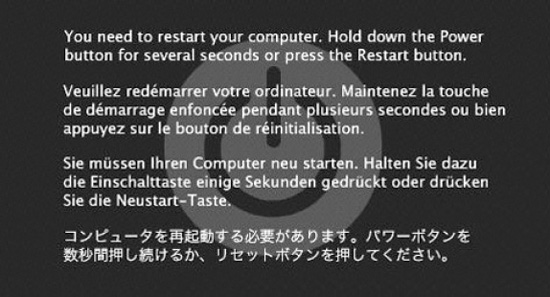Kernel Panics
A panic is the kernel’s main defense mechanism for dealing with exceptional conditions, such as the preceding list of problems. Instead of attempting to keep going on a fault, the safest course of action is to terminate execution of the system immediately to avoid damage to the file system. When a Mac OS X system panics, the user is likely met by the multilingual panic screen, unless the kernel has been configured with debugging options instructing the user to restart the computer, as shown in Figure 16-1.

Figure 16-1. Mac OS X Panic Screen, the Mac OS X equivalent of Window’s blue screen of death
Behind the scenes, the system will preserve a panic log, which contains a stack trace of the processor (core) the panic happened on. The panic log will be written to the system’s non-volatile random-access memory (NVRAM) temporarily, as it is generally unsafe to access the file system after a system has panicked. After all, the purpose of the panic is not to annoy the user but to shut down the party before it gets out of hand and protect the file systems from damage.
Once the system boots again, the panic log is copied to the /Library/Logs/DiagnosticReports/ directory. The system will also show the crash reporter dialog window, which allows users to report the problem to Apple.
